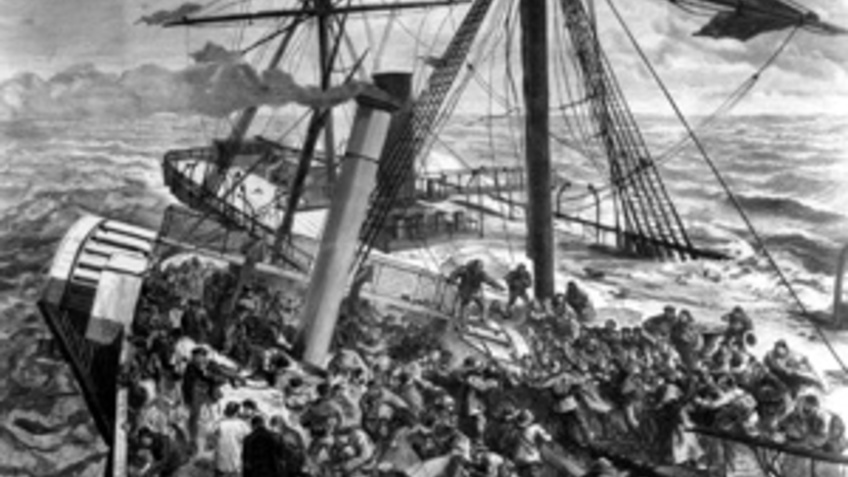Maritime Board building
On December 5th 1875, the transatlantic steamer "DEUTSCHLAND" of North German Lloyd ran aground in the Thames estuary. The shipwrecked crew and passengers were forced to spend a terrible night in the rigging of the stricken vessel, until 173 survivors were rescued by a paddle steamer. 57 people perished. This catastrophe led to the introduction of maritime boards in Germany which are still responsible for inquiries into accidents. Woodcut of 1875 (German Maritime Museum Archives)
The Maritime Board of Inquiry building in Keilstrasse 3 was built in 1898 in contemporary round-arch style. At first, it was used by the port authority as an office and accommodation. It was severely damaged by bombs in 1944, but reconstruction was completed as early as 1949. The Maritime Board has been using the building since then.
The function of the board was and is to examine serious accidents at sea and to find the specific causes. Headed by a judge, normally four qualified members (captains, engineers, and pilots) are authorised to question participants, witnesses and experts. They can also rescind captains' licences, but they cannot administer justice. This is the responsibility of the civil and criminal courts.
On 5th of December 1875, the passenger steamer "DEUTSCHLAND", owned by North German Lloyd, ran aground in the Thames estuary with the loss of 57 lives. The German seaboard states subsequently initiated a Law of Inquiry into Maritime Accidents in 1876, which finally led to the establishment of maritime boards at Königsberg, Danzig, Stettin, Stralsund, Rostock, Lübeck, Flensburg, Tönning, Hamburg, Bremerhaven, Brake and Emden in 1878.
The Bremerhaven board ended its work on June 20th 2002. A new law had transferred that function and its coordination to the Federal Water and Shipping Administration. When an inquiry does occur at Bremerhaven, the local Water and Shipping Administration office arranges for rooms where the work of the board can be carried out.
Caption:
On December 5th 1875, the transatlantic steamer "DEUTSCHLAND" of North German Lloyd ran aground in the Thames estuary. The shipwrecked crew and passengers were forced to spend a terrible night in the rigging of the stricken vessels, until 173 survivors were rescued by a paddle steamer. 57 people perished. This catastrophe led to the introduction of maritime boards in Germany which are still responsible for inquiries into accidents. Woodcut of 1875. (Photo: German Maritime Museum Archives)

